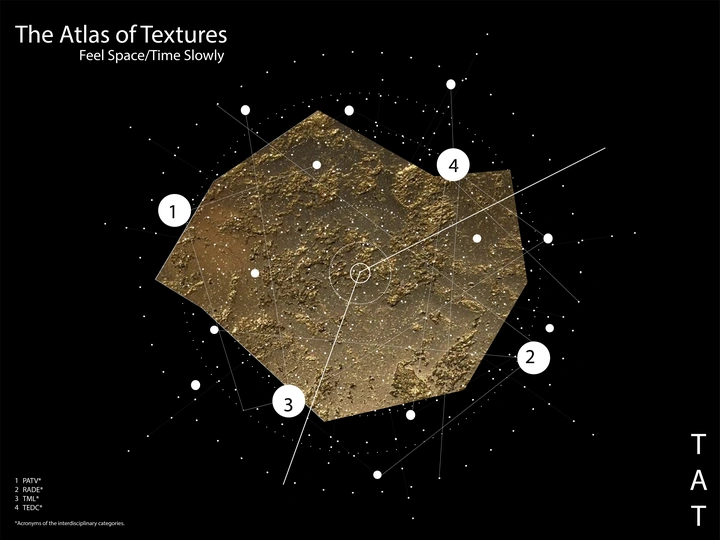The Atlas of Textures – Feel space/time slowly

Desyrée Marmello, architect, urban planner, and researcher (1991). Her academic and professional journey has been marked by a diversity of experiences and a passion for the interdisciplinary exploration of architecture.
She obtained a degree in Architecture and Urbanism from the Faculty of Architecture and Urbanism of Santos (FAUS), Brazil, (2016). She went on to study for a master’s degree at the Faculty of Architecture and Urbanism of the University of São Paulo (FAUUSP) (2017-2018). In search of an international perspective and new learning opportunities, she took the Integrated master’s degree in architecture at the Faculty of Architecture of the University of Porto (FAUP), which she completed in 2023.
His latest published research, entitled "Spheres - A força da atmosfera como experiência arquitetônica", was chosen as one of the best final papers and published in the FAUP Annual (2023). Currently, his interdisciplinary research focuses on a deep curiosity, restlessness, and fascination with materials, with an emphasis on understanding aspects of the experience of space in architecture, including its psycho-sensory aspects. He is constantly seeking new insights and perspectives that can enrich his work and contribute to the advancement of the discipline.
The interest in carrying out this research reflects the start of a manifesto, which aims to raise support from institutions for an article and temporary exhibition/installation (2025). Entitled “The Atlas of Textures" (TAT), it proposes an imaginary line where space and time merge, exploring textures, their presence, and beauty in materials, emphasizing the powers of regenerative materials. Questioning how regenerative materials can influence our experience of built space compared to traditional materials?
The initial methodology aims to move between the immaterial (theory) and the material (practice). It seeks to promote an attentive reading of form, categorizing them into "closed form" and "fluid form" (Paul Frankl). They are then organized into four interdisciplinary lines:
Patterns | Ambivalences | Transitions | Variations - A new Iconology of intervals;
Relationships | Ambiguity | Densities | Evolutions - A re-reading of the world in which they find themselves;
Texture | Matter | Slowness - Ecosystem of texture / A new perspective on textures;
Tectonics | Standardization | Disintegration | CO2 - Exploring the experimental/The process beyond human control;
We will create some of the materials for the research/exhibition by hand and aim to invite emerging architecture firms to collaborate, forming a collective. We propose to discuss the materials through touch and vision, exploring the relationship between man and space-time in a "slow" way, challenging contemporary speed, and inviting intentional observation of the world around us.
The research seeks to propose advances in architecture, through data analysis and an investigative process that emphasizes "practice" as a way of understanding regenerative materials and their relationship with space, exploring their potential to intensify their presence in the built environment and as a solution in architecture.